Christian Michael Filardo is a Filipino-American photographer, who works as the art researcher for the international platform PHROOM, a magazine which features and supports contemporary artists working with the photographic and the moving image.
A photographer, writer, and champion of the arts, Filardo crosses and blurs boundaries, combining text and image, research and practice, and all things in between. In this interview, I spoke with Filardo regarding their experience in the contemporary art world, their day-to-day role as an art researcher, and their most recent body of work.
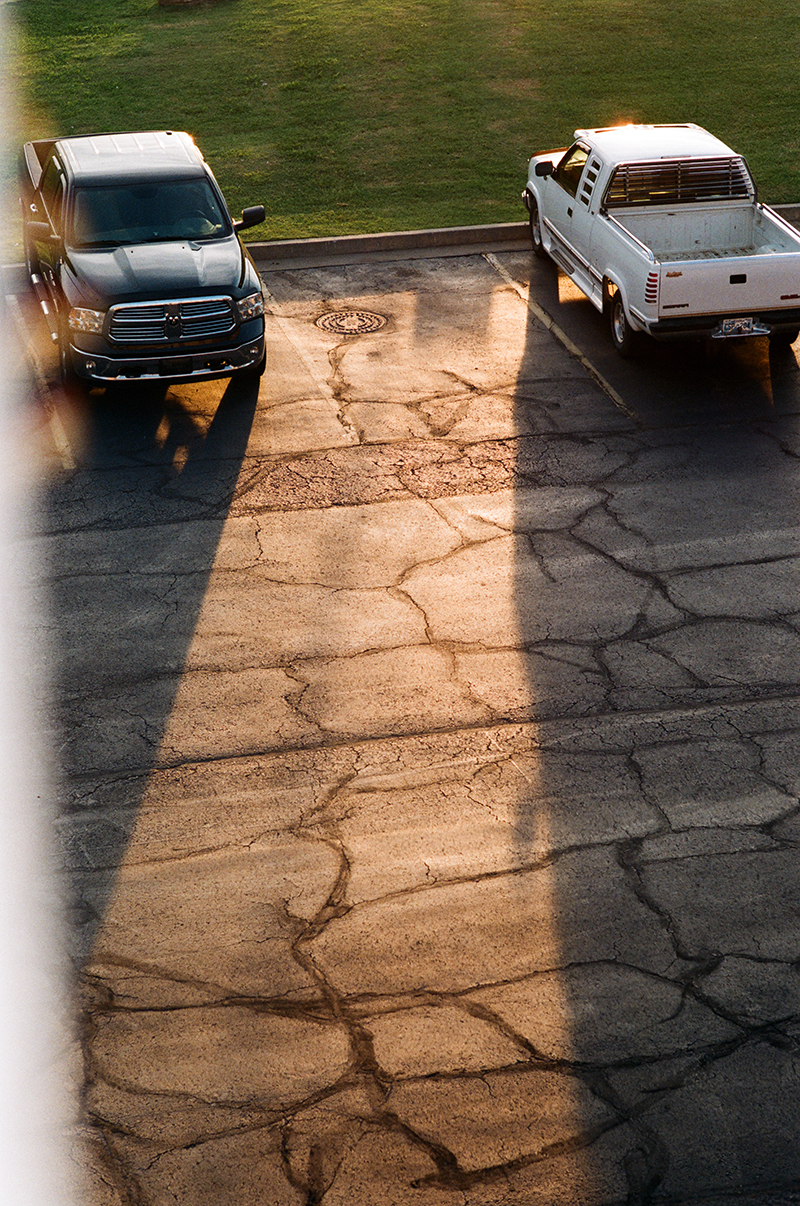 “From the window I watched the light move across the concrete horizon from east to west. This was a time when we were still together, before the gaslight lit. Some people are coming and others are going, there isn’t much between. When we first met we both bought the weed and towards the end I was getting it from a few different people for free. I wish I had a truck, then I’d have two beds. One at home and one on wheels. When I finally escape this the cards say there will be harmony, I believe it.”
“From the window I watched the light move across the concrete horizon from east to west. This was a time when we were still together, before the gaslight lit. Some people are coming and others are going, there isn’t much between. When we first met we both bought the weed and towards the end I was getting it from a few different people for free. I wish I had a truck, then I’d have two beds. One at home and one on wheels. When I finally escape this the cards say there will be harmony, I believe it.”
Julia Wilson: As a poet, photographer, videographer, et al., as well as a researcher and bastion of contemporary arts for the platform PHROOM, how do the different spheres of your art involvement and practice relate and intersect? In a world that often demands artists to fall into a specific medium or definition, what led you to this place of such disparate practice?
Christian Michael Filardo: My art practice is fairly fluid. First and foremost, I am a photographer that takes the liberty to pull things in and out of their practice. Recently, my Instagram has become a vessel for newly incorporated text diaries that are paired fairly randomly with images of the same ilk, feeling, energy. At this moment these works exclusively exist on the social media platform and there is no current intention to place them elsewhere. I find that openness and vulnerability in my work are key components to my art practice; I expect a certain intimacy to be conveyed in my work.
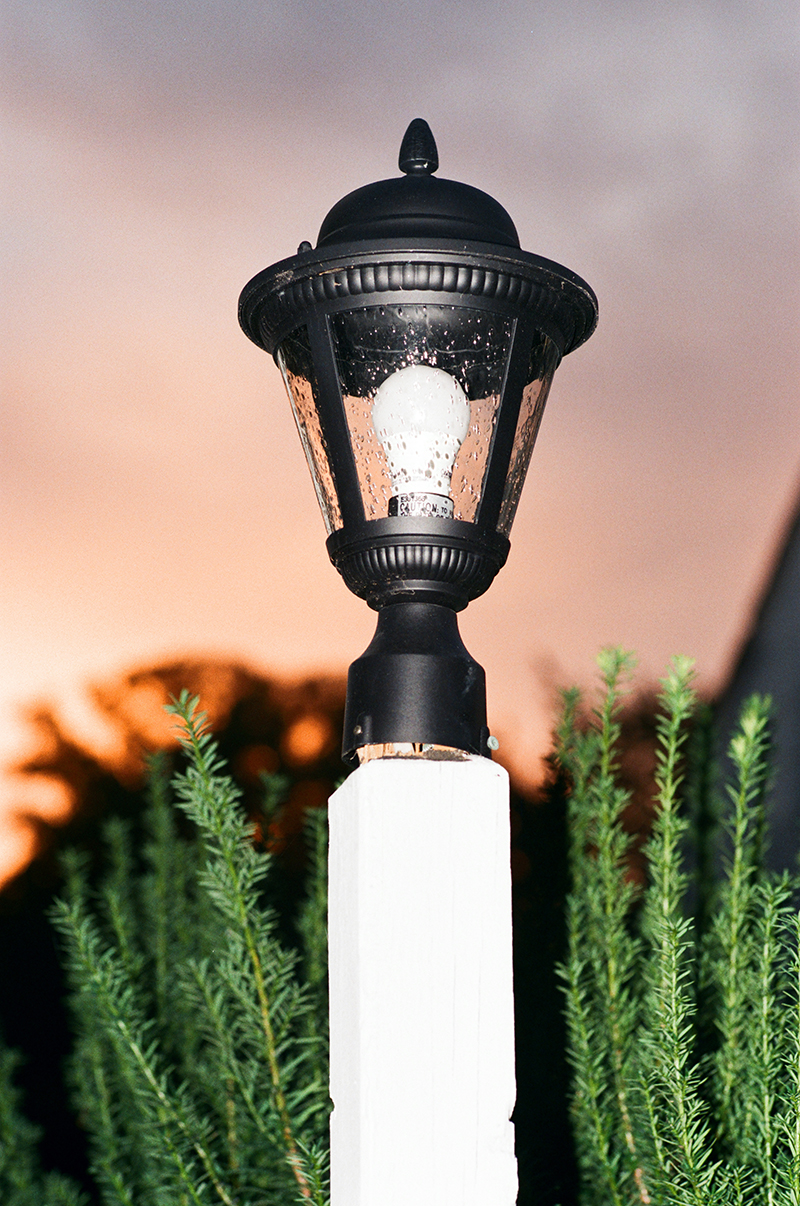 “When I see an artificial dew drop. When I see a plant that isn’t rosemary. When I see light behind the light. We knocked out the walls and revealed doors, we pulled out the doors and revealed mold, we cleaned out the mold and found rot, we removed the rot and found space.”
“When I see an artificial dew drop. When I see a plant that isn’t rosemary. When I see light behind the light. We knocked out the walls and revealed doors, we pulled out the doors and revealed mold, we cleaned out the mold and found rot, we removed the rot and found space.”
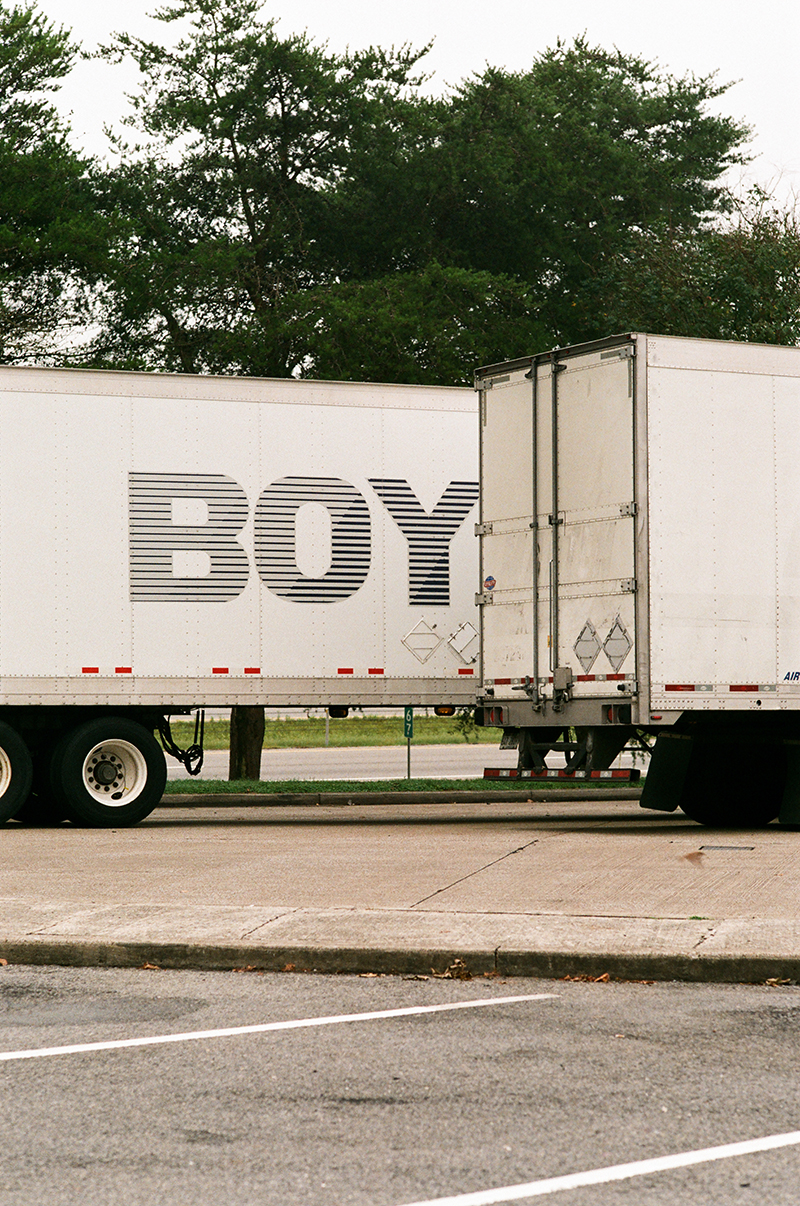 “I’m not a boy or a girl. Constantly changing array of light. The light was settled on being nothing but grey that day. Someone shouted, “faggot” at me while I took this picture. I laughed and flipped them off while releasing the shutter, camera to my eye. Cutting all the labels off my shirts.”
“I’m not a boy or a girl. Constantly changing array of light. The light was settled on being nothing but grey that day. Someone shouted, “faggot” at me while I took this picture. I laughed and flipped them off while releasing the shutter, camera to my eye. Cutting all the labels off my shirts.”
CMF: To be honest, the intersection and disparate nature of my practice was birthed out of pain and isolation from a breakup and the unfamiliar territory of a transition – at least in the case of these Instagram works. While my move has been going quite well, the safety of my past has fully eluded me. Time zones change, people change, the world keeps spinning. I find safety in intimacy, whether that intimacy is that of a peer or of a lover. I find comfort in shared experiences – giving and listening. In the ability to present my daily experiences to a public sphere, I am able to comprehend that my days aren’t blank, but full – full of focused experiences. These pairings of pictures and writings act as cathartic reflections of my everyday.
That being said, for PHROOM I act as an interpreter, conversationalist, and researcher. Giangiacomo and Matteo, the PHROOM gurus, allow me a lot of liberty and freedom. However, my true love when it comes to critical engagement in photography is when I get to interview artists I admire. I’m particularly interested in people who push the genre of photography beyond the two dimensional plane, young photographers, and photographers who have something to say about identity.
 “Define a secure drip. I can’t count the ways. Baltimore, city of heartbreak. There hasn’t been a time when my heart hasn’t been breaking in Baltimore. She said, “I don’t love you anymore” while folding my laundry in Remington, another moved to Amsterdam on my birthday, a gift from a past love to see the Orioles play the Yankees during the worst season in the team’s history. Sitting behind a family wearing MAGA hats. The light shining on third base where Machado used to be on nickname day. A cup overflowed somewhere.”
“Define a secure drip. I can’t count the ways. Baltimore, city of heartbreak. There hasn’t been a time when my heart hasn’t been breaking in Baltimore. She said, “I don’t love you anymore” while folding my laundry in Remington, another moved to Amsterdam on my birthday, a gift from a past love to see the Orioles play the Yankees during the worst season in the team’s history. Sitting behind a family wearing MAGA hats. The light shining on third base where Machado used to be on nickname day. A cup overflowed somewhere.”
JW: I love that you find intimacy in a platform that I might consider more removed or sterile, or merely something necessary (to exist/market as an artist). Maybe this discrepancy between our outlooks proves the platform can be what we make of it. I also find it interesting how a photographer pushing the bounds of photography can use in a new way a very conventional platform for the everyday user. How do you research and find new artists for PHROOM in a world dominated and deluged by imagery? Moreover, how do you view the relationship between text and image, captioning, and the creation of meaning based on their proximity?
CMF: For me, my writing and photography are diary based practices. They really exist in the same context; they are directly linked to me in a very obvious way. They aren’t fabricated or constructed, merely they are documents that I am selecting to present publicly. However, I don’t reveal it all. There is a lot that isn’t shown, but I try to be as giving as possible. I’ve spoken in detail with many about how I’d like to be a lover first and an artist second. My greatest desire on Earth is to give myself to people, fully, while not expecting anything in return. Ideally, I’d meet someone who wants to be my teammate and collaborator. While that is my desire, I’ve found it to be harder in practice – to release my ego and abandon expectations.
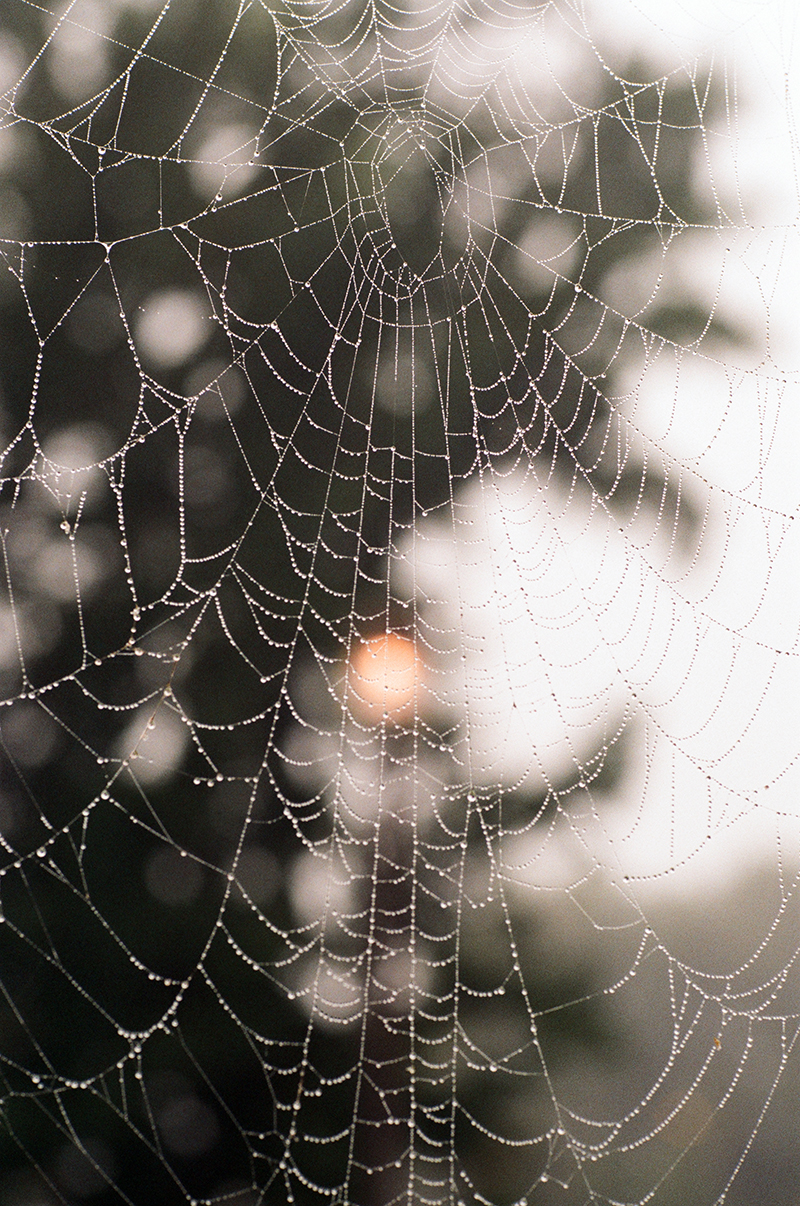 “This was the most beautiful thing I had ever seen. Spider web tangled in morning dew. Delicate and quiet. Rest stop, cemetery, Tennessee. Drinking a Chianti alone in my house at three o’clock in the afternoon. I remember pacing around this web in the morning hours after pummeling through the southern morning fog in my Chevy. Alone, playing Mount Eerie to no one but myself. Songs about a lover dying. Mount Eerie is nowhere.”
“This was the most beautiful thing I had ever seen. Spider web tangled in morning dew. Delicate and quiet. Rest stop, cemetery, Tennessee. Drinking a Chianti alone in my house at three o’clock in the afternoon. I remember pacing around this web in the morning hours after pummeling through the southern morning fog in my Chevy. Alone, playing Mount Eerie to no one but myself. Songs about a lover dying. Mount Eerie is nowhere.”
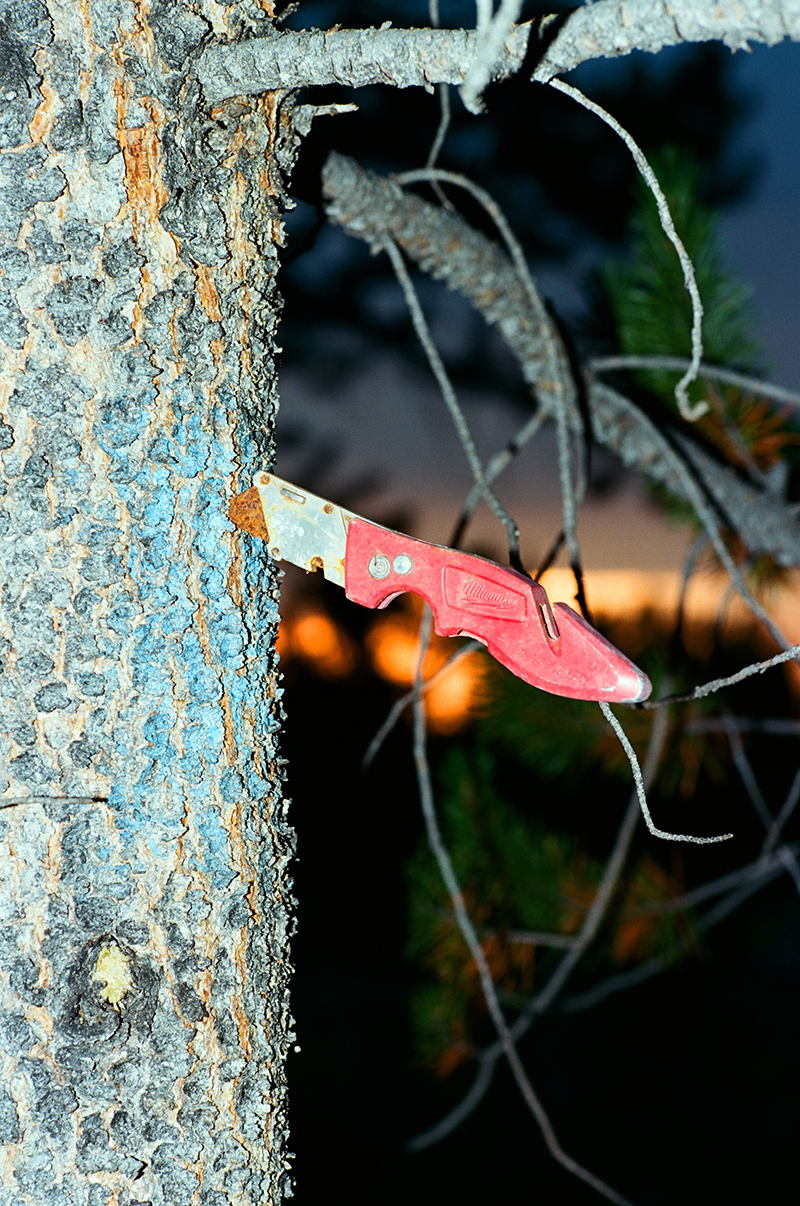 “The tale of a rusty blade. Ogden doesn’t know it, but he’s one of my best friends. He was almost an Olympic fencer. He is one of my favorite photographers. He tells me he’s going upstate. We smoked cigarettes all night, he smoked Camel Turkish royals, mine American Spirit yellow. I think we were destined to be friends, destined to show each the mysteries we contemplate. The younger artists are coming, they are coming to take what we are still looking for. Perhaps they will find it.”
“The tale of a rusty blade. Ogden doesn’t know it, but he’s one of my best friends. He was almost an Olympic fencer. He is one of my favorite photographers. He tells me he’s going upstate. We smoked cigarettes all night, he smoked Camel Turkish royals, mine American Spirit yellow. I think we were destined to be friends, destined to show each the mysteries we contemplate. The younger artists are coming, they are coming to take what we are still looking for. Perhaps they will find it.”
CMF: In the literal sense of captioning an image, I think this process in and of itself is something that needs to be completely overhauled literally and conceptually. If I see a picture of a bird, and the caption says the name of the bird, and where the bird lives; this is very literal information. I’d rather have the caption describe the literal and simultaneously describe how the bird made the photographer feel, what sort of sounds it made, what it felt like to see the bird upon first sight, etc. The images and text intertwine in the sense that they become a conversation that I am having with myself. It’s a process that becomes directly exposed and known to the viewer.
PHROOM is a truly liberated platform. We work together to curate a photography based vision that represents a wide range of image makers. Contemporary photography, to me, is anything dealing with the image in the now. Personally, I only care to cover people who are with us, alive. I look for people who seem youthful, have a knowledge of photographic history, and have something unique to say.
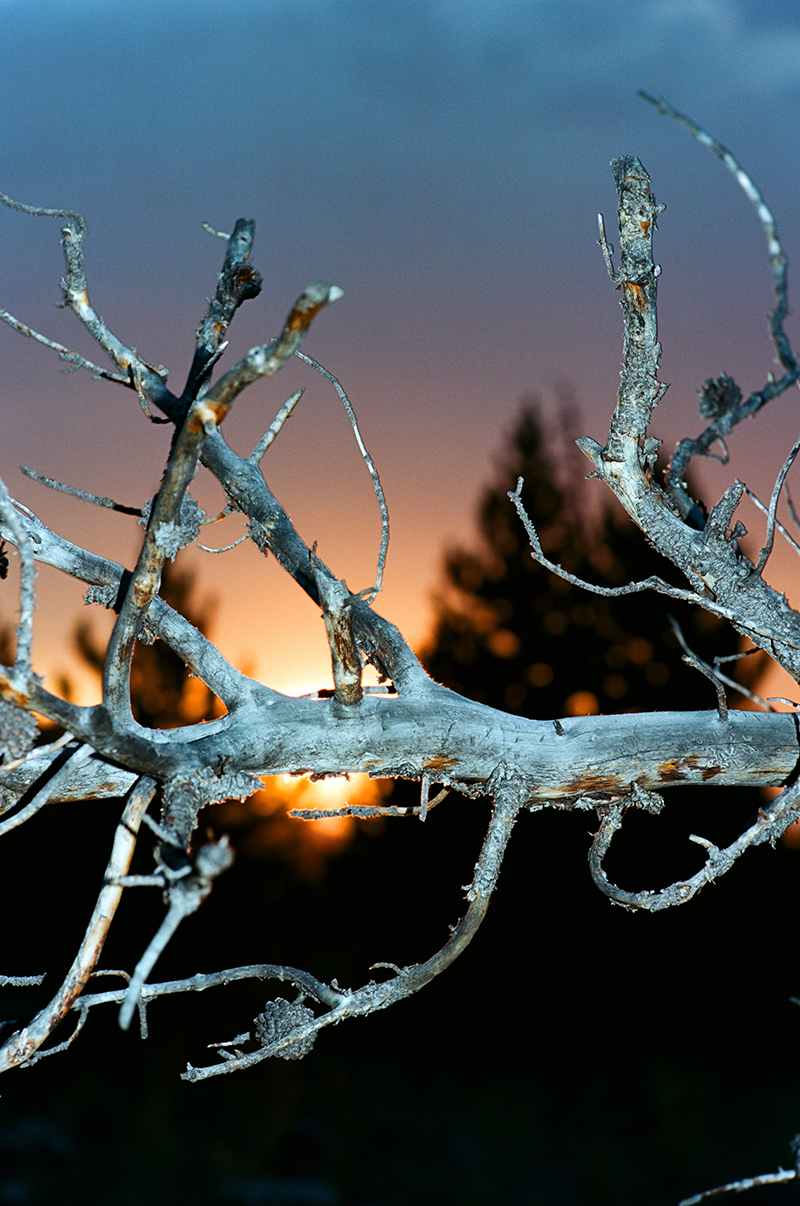 “Heaven is in Fraser, Colorado. I’ve seen it with bloodshot eyes. We smoked a strain called “Cotton” and ate cookies called “Dutch Girls”. Throwing a small black Under Armour basketball off a porch towards a basketball hoop. I was the first to make the basket and the first to make myself a drink that day. I’m a drug addict but I don’t care. I can stop anytime I want. I can stop anytime. I’m still in love with an angel, two dollar and fifty cent 35mm Canon camera photograph. Heaven is real, I’ve been there. Heaven is a cabin in Fraser, Colorado watching movies from Redbox high out of your mind on marijuana.”
“Heaven is in Fraser, Colorado. I’ve seen it with bloodshot eyes. We smoked a strain called “Cotton” and ate cookies called “Dutch Girls”. Throwing a small black Under Armour basketball off a porch towards a basketball hoop. I was the first to make the basket and the first to make myself a drink that day. I’m a drug addict but I don’t care. I can stop anytime I want. I can stop anytime. I’m still in love with an angel, two dollar and fifty cent 35mm Canon camera photograph. Heaven is real, I’ve been there. Heaven is a cabin in Fraser, Colorado watching movies from Redbox high out of your mind on marijuana.”
JW: I think ‘photography as art’ is in a unique place within the contemporary moment due to its current automation and ease of use. How do you respond to someone who says that photographers are fighting or dealing with the anxiety of obsolescence, much like postmodern writers did?
CMF: Many will argue that the photograph and the photographer are obsolete. However, for years people have gone on and on about what photography is and isn’t. People thought the computer would be the death of the book. They also thought photography would always be a science and never an art. Photography is accessible, it’s democratic, but to be frank, so is all other art. Those who can take a picture can make a painting, a pot, a sculpture. Art in and of itself is something that is “obsolete”. Anyone can make art, an elephant can make art, a monkey, a bug, a robot, a vacuum.
I find, for the most part I have an interest in what many call “straight” photography. I like pictures made to exist as pictures and I don’t care if they are film, digital, or in between. That also being said, I like when photographs become sculptures, collages, ceramics, and anything else. For PHROOM, we mostly specialize in presenting the photograph as a photograph, we get as radical as collage, but ultimately we are looking at photographs. This is what we are excited about, as I’m sure you are too.
I can’t help but feel like obsolescence is an agent of fear, which in the arts I’ve never really cared to be apart of. As an artist and a curator, I look to those who do what they want to do. People who let their passion steer the ship. The storm is simply just a storm. If you drown in a storm, your dead but at least you tried and regret nothing. This being said I try not to live in fear.

“I think I just talked to her for the last time. She talks faster when she wants to get off the phone. I often win at Jenga. Although it’s not because I am patient. Realizing you’re done with a person you love is hard, cutting them out of your life is harder. I mince garlic before I throw it in the pan. My haggard yellow nail polish smells like today’s breakfast.”
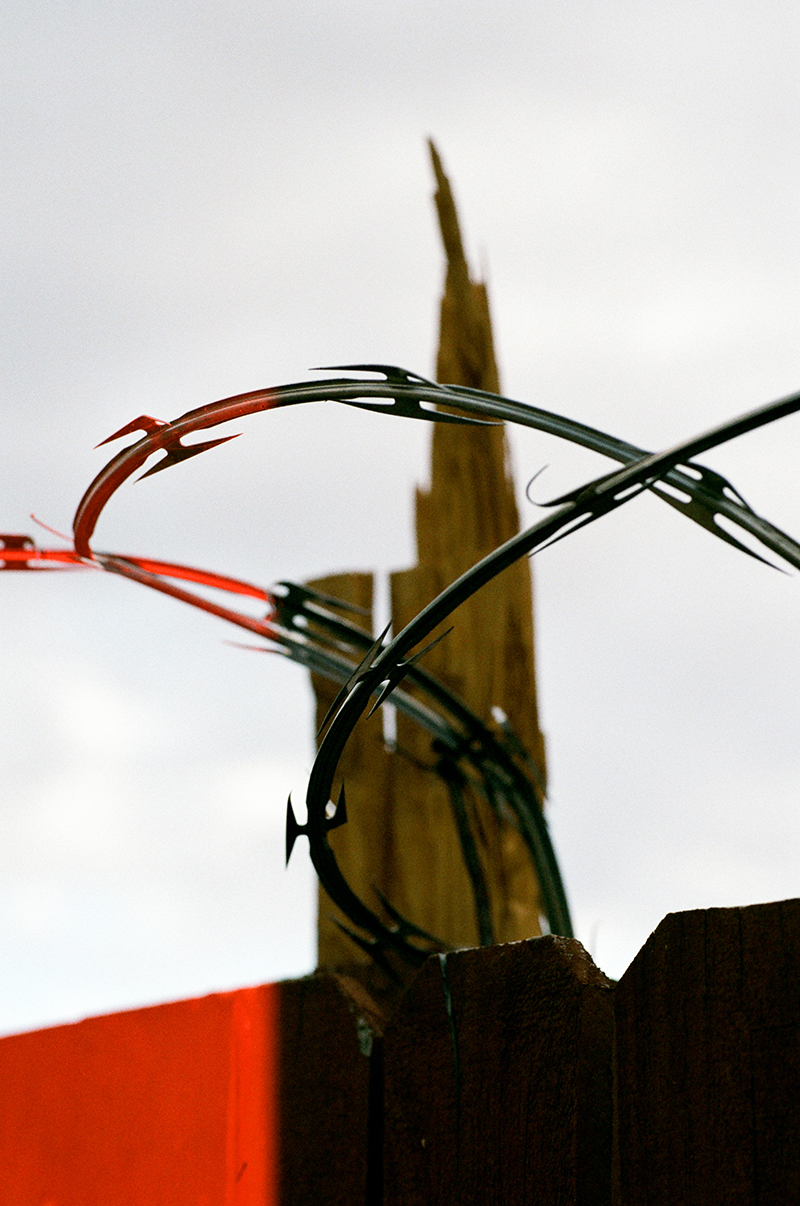 “Some think that this energy is profound. That it is something beyond what they can initially comprehend. Others think that they can drink away their problems. Cars stay on the road even when they are stopped, parked in the street. What would we do without gas? Power went out the other night and the generators began their song throughout the neighborhood. I slept with a flashlight in my bed. If Frank comes back to stick his fingers up my ass, I’ll beat him over the head with this black tube.”
“Some think that this energy is profound. That it is something beyond what they can initially comprehend. Others think that they can drink away their problems. Cars stay on the road even when they are stopped, parked in the street. What would we do without gas? Power went out the other night and the generators began their song throughout the neighborhood. I slept with a flashlight in my bed. If Frank comes back to stick his fingers up my ass, I’ll beat him over the head with this black tube.”
JW: I think that’s an amazing idea, a sort of all-encompassing cyclical process – what we collectively believe will be outmoded, but in the end is reborn in art’s transcendence, diverting ideas or theories, which purport or fear “obsolescence.” I’m especially thinking about the invention of photography, and its relation to painting, and moreover the invention of digital photography and its relationship to analog – overall the relationship between art, technology, and society.
To finish off, what has been the biggest influence on your work, and how you view work? Was there a certain book, writer, poet, philosopher? What or who do you believe artists today should be reading/absorbing?
CMF: Like most photographers I’ve been reading Raymond Carver. I think the most influential thing to my practice has been time. I try to take the time to consciously practice everyday. I do it selfishly, for myself, taking as much time as I need. This time is my privilege. I think another thing that every artist should do is work a job that they hate for at least a few years in their life. If you haven’t been exhausted doing something you don’t like then you haven’t been able to truly grasp how lucky you are to be able to create something artistically for pleasure or practice. In addition, I think we all need to practice listening more, myself included. We get so caught up in trying to be something and often miss the point of why we make art altogether. The most influential person in my life is my brother Tom who has always worked tirelessly at his craft as a musician.

“A superhero in the form of the human as a trophy. Hidden by the reflection of the sky. I don’t know her shadow but I’d like to. My brother is pulling out the drop cloth so we can knock out the ceiling. I’ve continued drinking the red wine from last night. Shared with a good friend by the lake closed after sunset.”
To view more of Christian Michael Filardo’s work please visit their website.